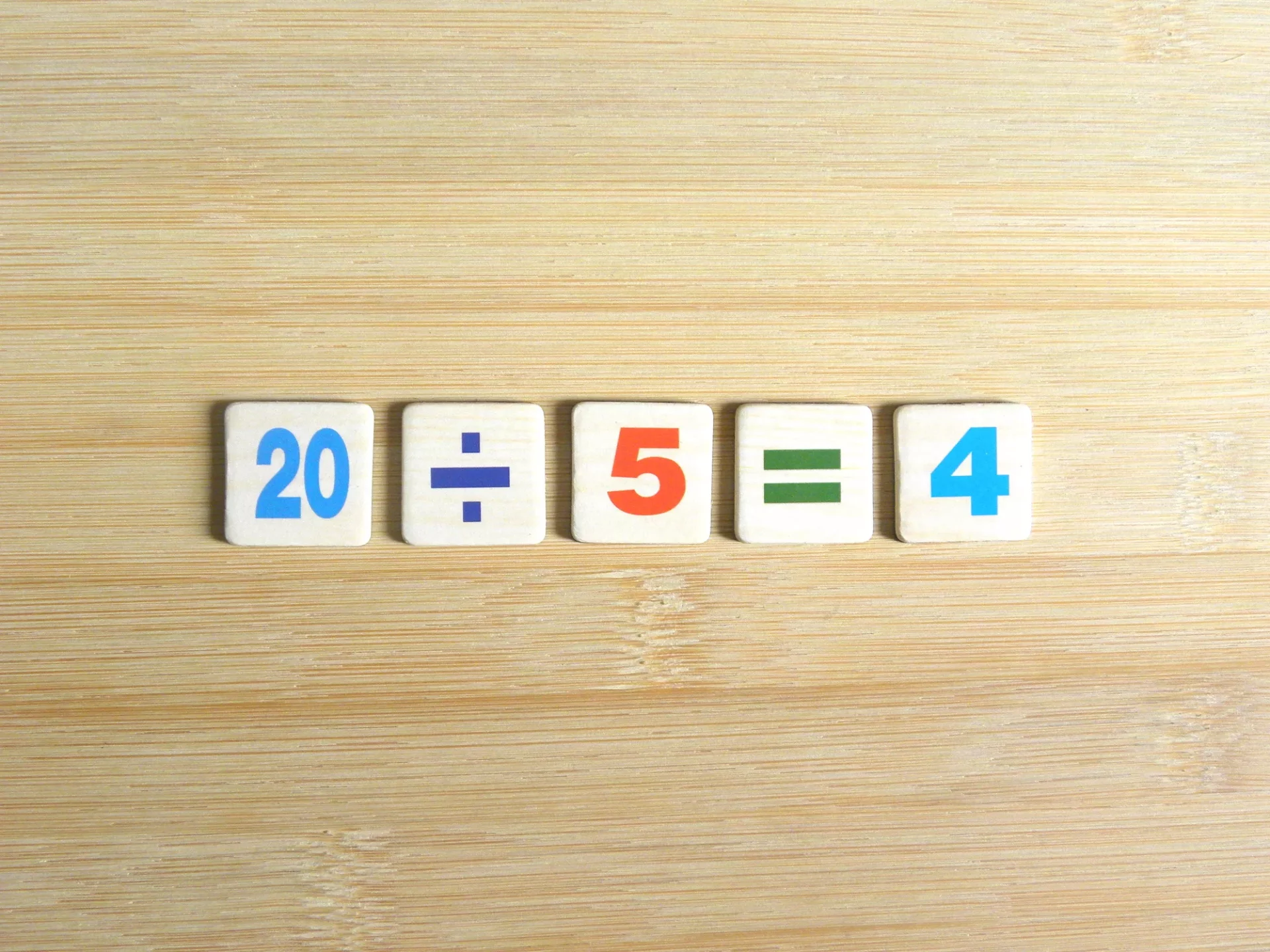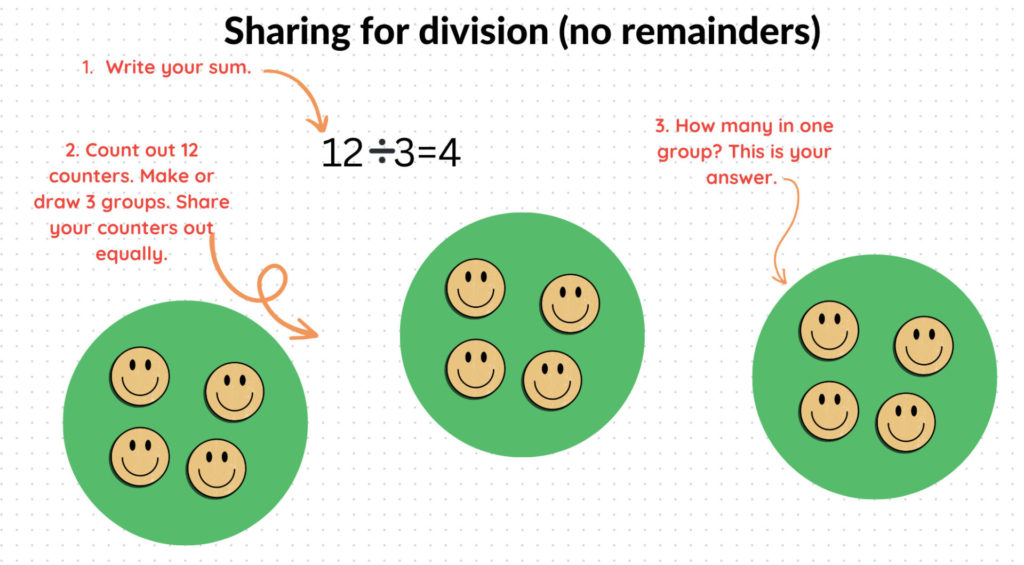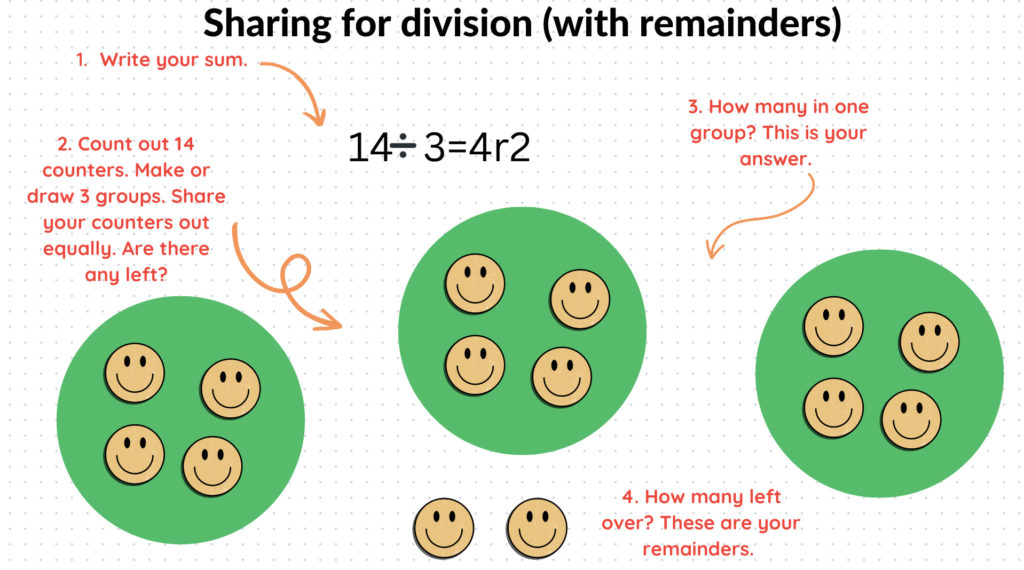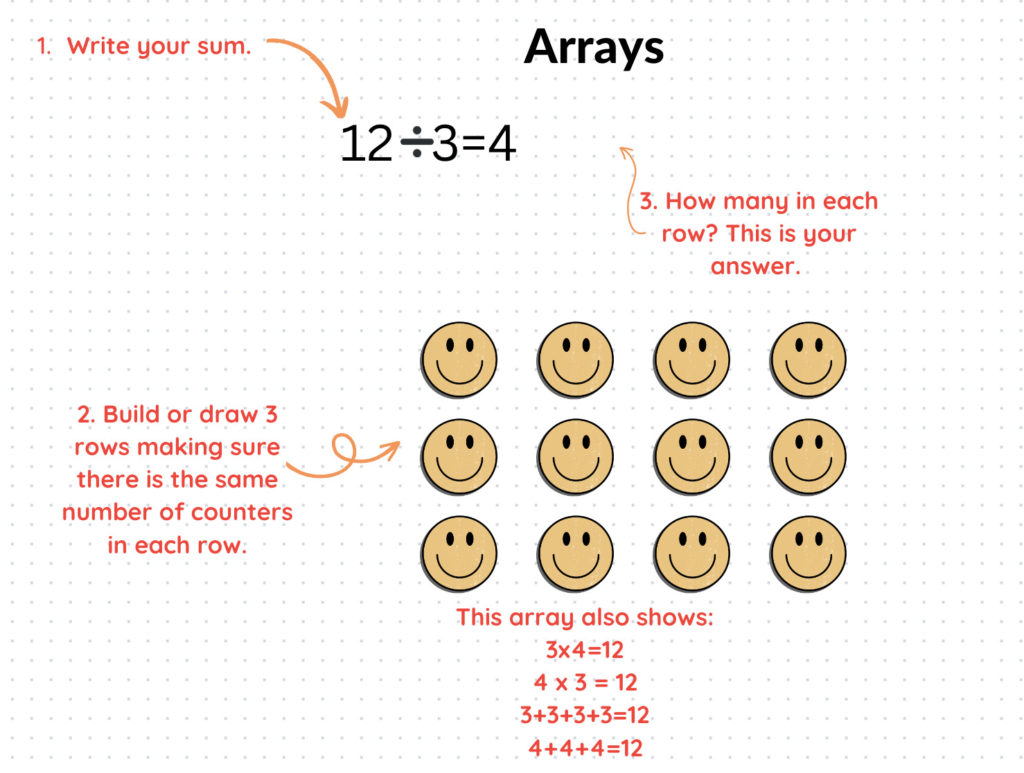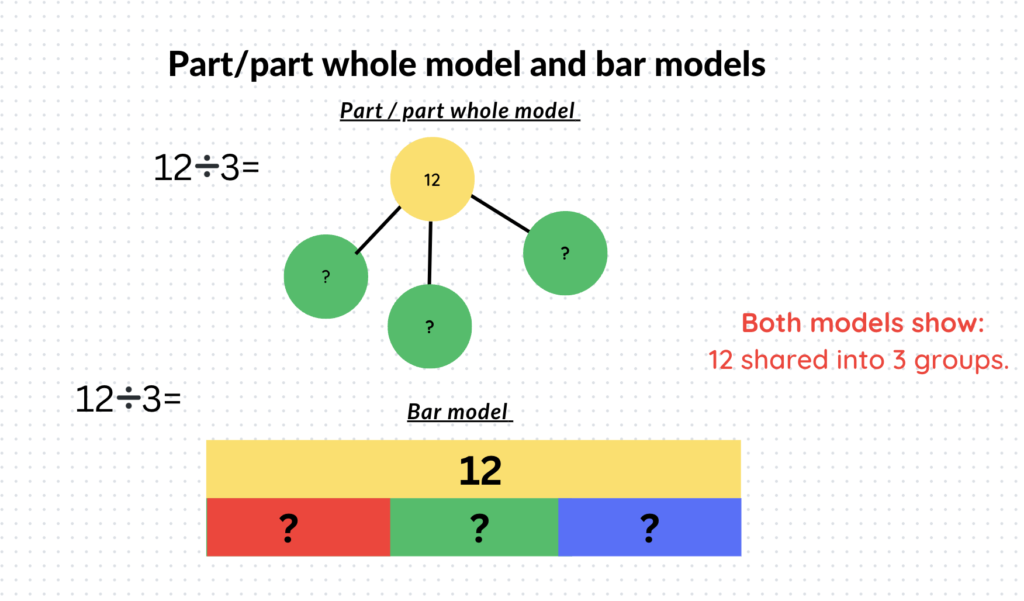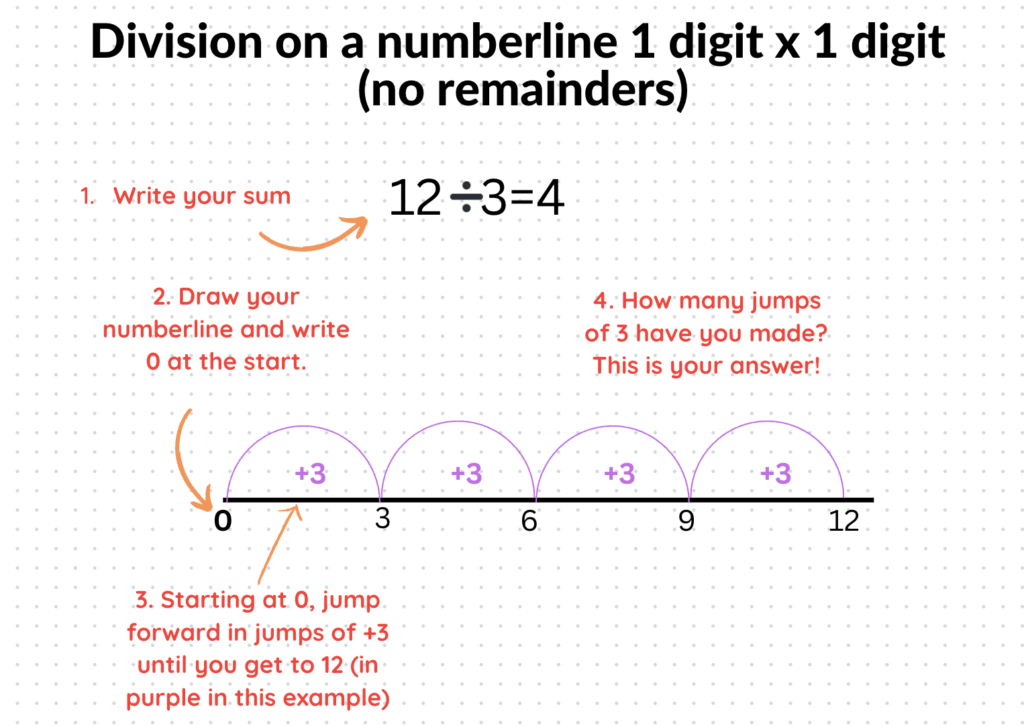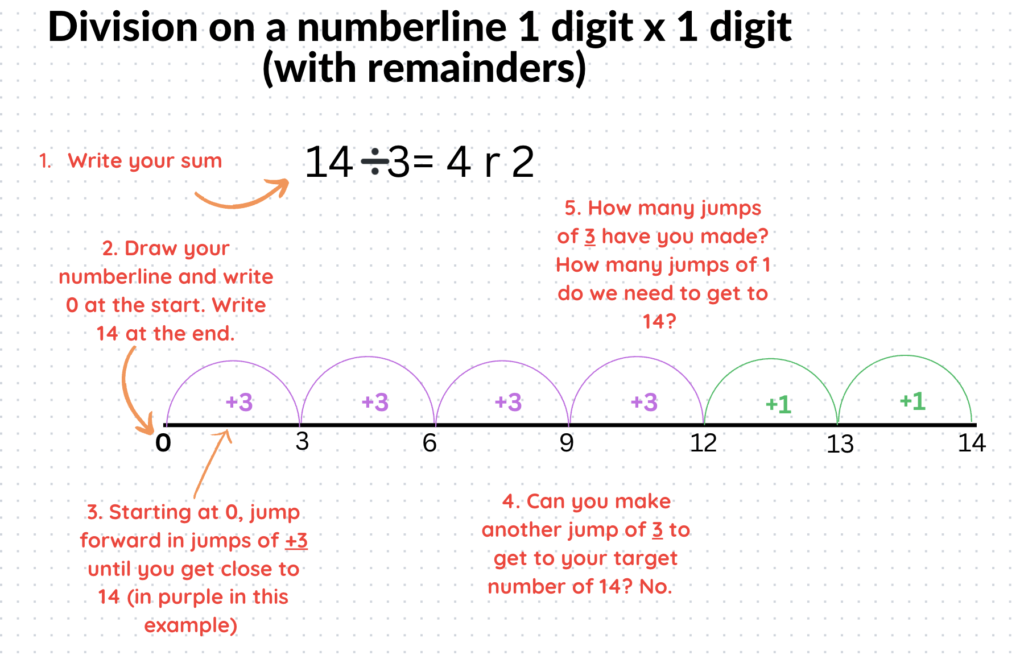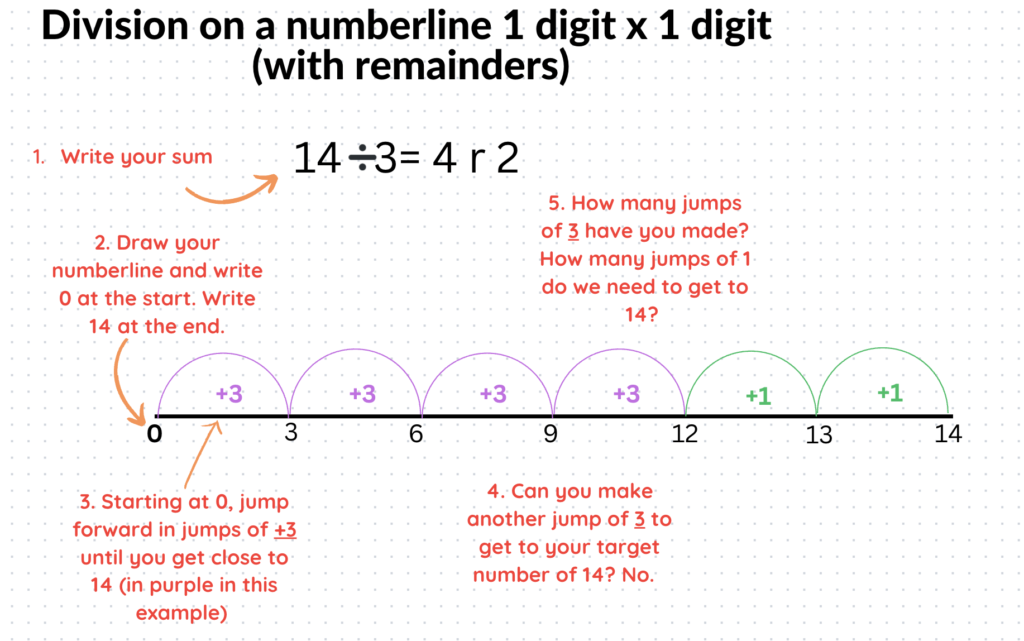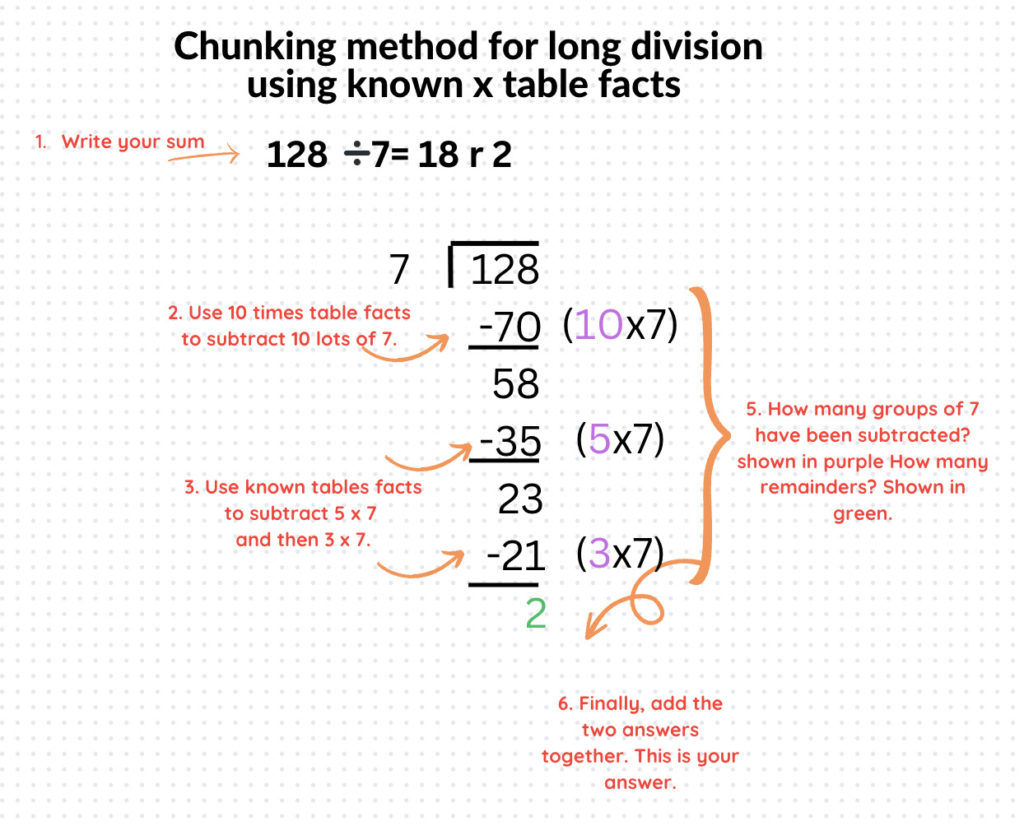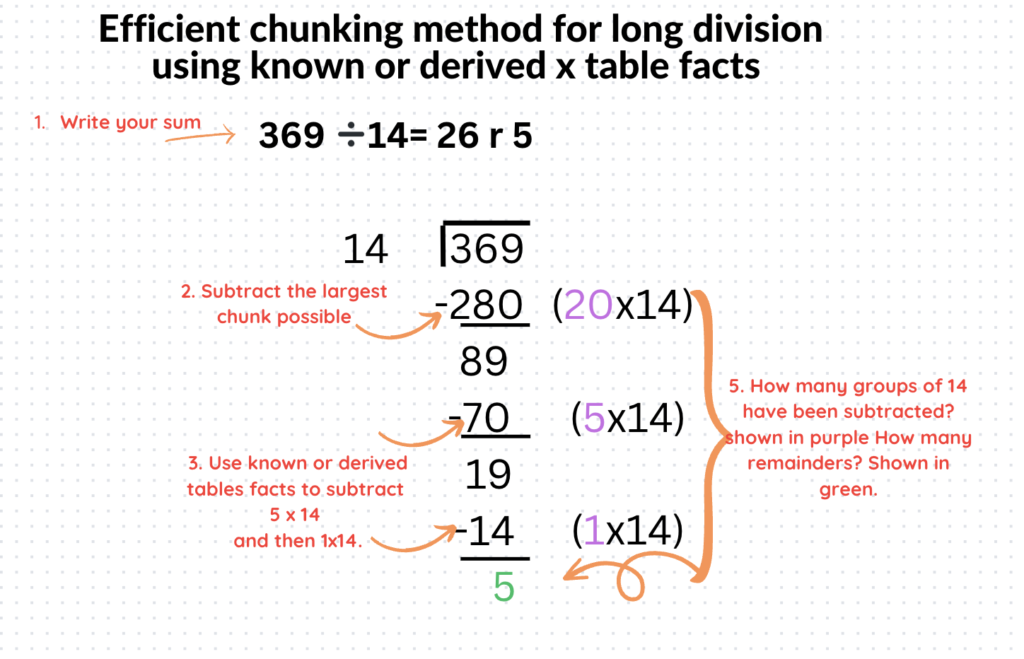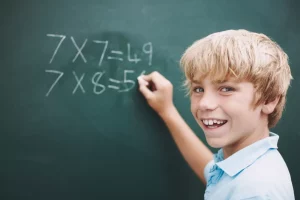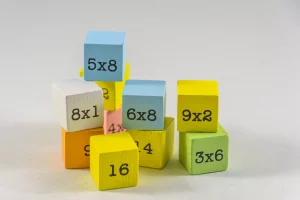This is the final Tutoring Heroes Guernsey guide to written calculation methods, and we’ve saved perhaps the trickiest until last: division. Whilst many children understand the concept of sharing – at least at a mathematical level – dividing using bigger numbers requires children to have good times table knowledge as well as be able to both add and subtract accurately. Our specialist maths tutors in Guernsey have lots of experience of supporting children who are finding written methods of division challenging. As with the written methods for addition, subtraction and multiplication, maths tutors and teachers will always recommend the use of manipulatives (maths equipment such as counters) or drawings to support understanding. The methods outlined in this article are progressive, and your child’s maths tutor or class teacher will be able to advise as to which is most appropriate at their current stage of learning.
Prior learning
Sharing is a key mathematical and social concept which children encounter from a young age. The emphasis is always on equal sharing, making sure that all groups receive the same number of objects. As they head into Year 2, children will begin to share objects and drawings with remainders. These hands-on experiences are vital in developing understanding of division at a conceptual level. You will see children in Guernsey Reception and Key Stage 1 classes having many opportunities to explore this.
Arrays can also demonstrate sharing in a more organised way, and help to augment the links between multiplication and division.
Other ways of representing division problems
If your child is in a Guernsey primary school, the chances are you will have already encountered bar models and part/part whole models (or perhaps you’ve read our other articles on addition, subtraction and multiplication on our Tutoring Heroes Guernsey blog!).These methods are globally recognised and are backed by research, to give a visual representation to 4 operation problems. Remember, these models are not designed to solve the problem, but to help children understand what mathematical function is required.
Numberlines
Once your child is ready to begin to represent their work on a numberline, they will already have experience of using a numberline to show addition, subtraction and multiplication. You’ll notice the similarities between methods for multiplication and division here, and often our Guernsey maths tutors will teach these methods in tandem, especially in Year 3 and 4.
This method is also more than capable of solving long division problems, involving 2 and 3 digit numbers, something our Guernsey maths tutors often see Key Stage 2 children struggling with. The following and subsequent methods also require children to have good times tables knowledge. As you will see later, this method also develops foundational understanding for the ‘chunking’ method.
Chunking
The chunking method of division, also known as the repeated subtraction method, is a technique used to divide large numbers. This method involves breaking the dividend (the number being divided) into smaller, more manageable chunks, and then repeatedly subtracting the divisor (the number you’re dividing by) from each chunk until you reach the end of the dividend. We often find that children in Year 5 and 6 in Guernsey primary schools need additional support from their maths tutor to feel confident with this method. If you think your child would benefit from some additional one to one support, please get in touch with us so that we can arrange for one of our Guernsey maths tutors to help your child.
The final chunk!
Once your child can use these methods effectively, they will be ready to start using the standard written method for division and then long division. Not only that, they will have a solid understanding of the foundations of division and its interplay with other operations. Division is a key concept, which supports understanding of fractions too (a topic our Guernsey maths tutors often help students with). As such, good knowledge and confidence in division at Key Stage 2 is extremely valuable as children move on to study at Key Stage 3 and GCSE.

